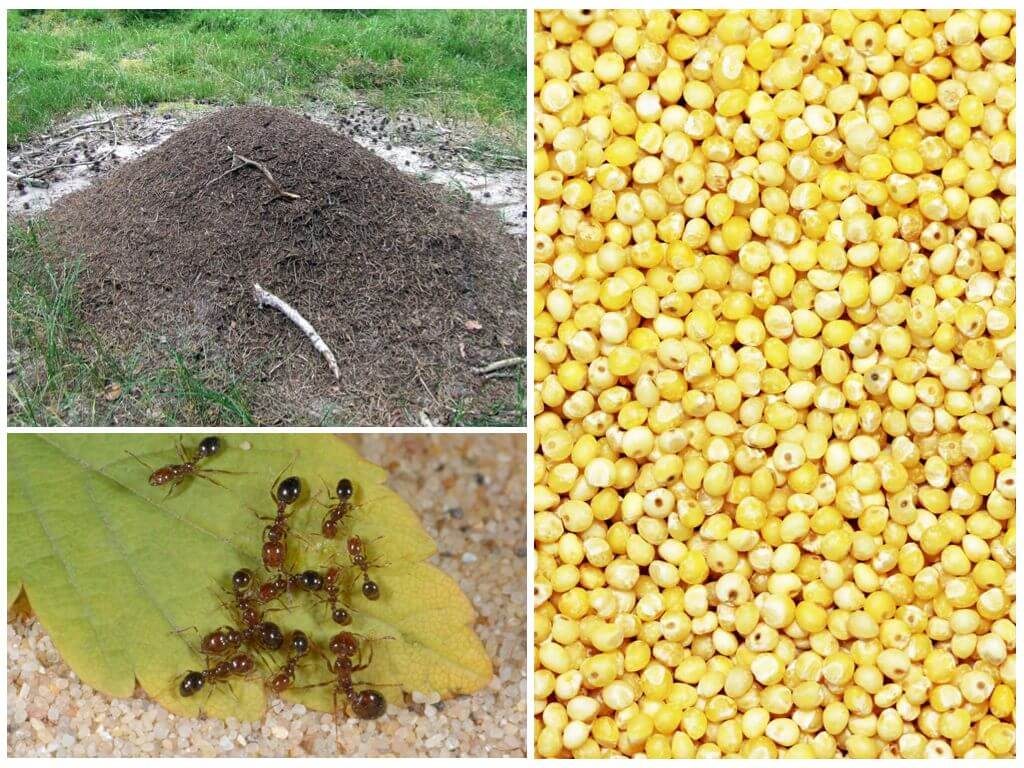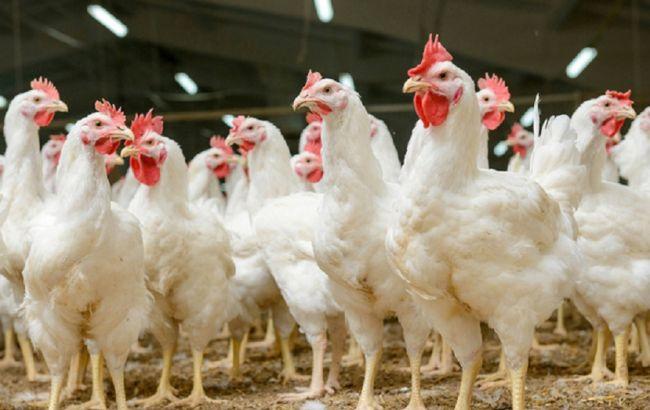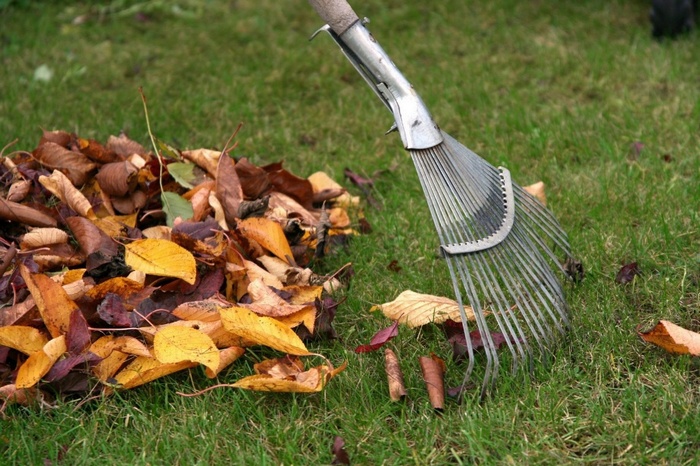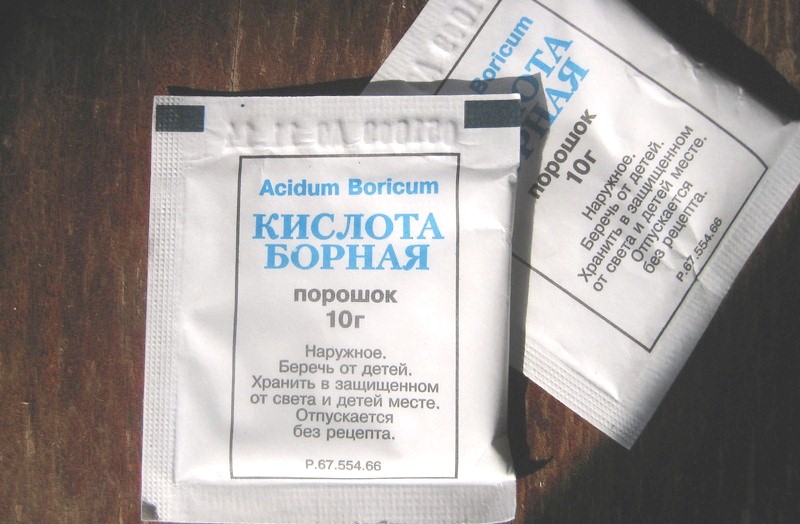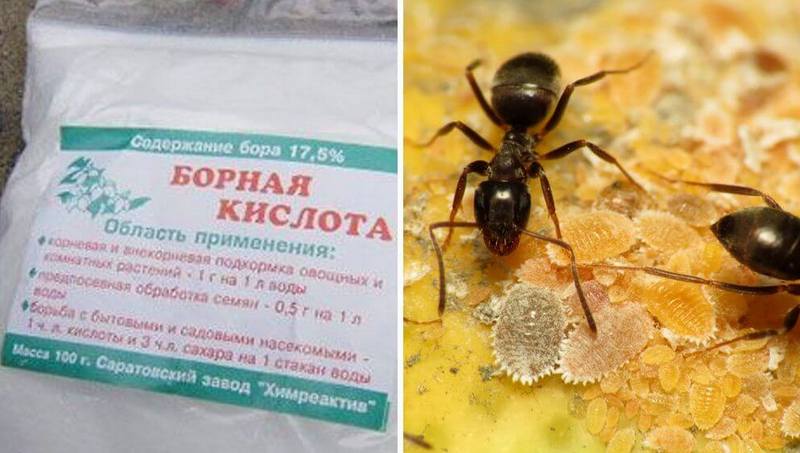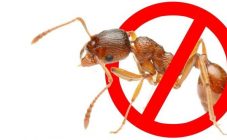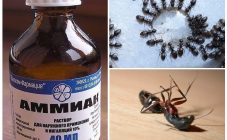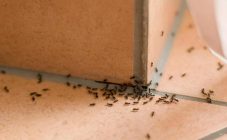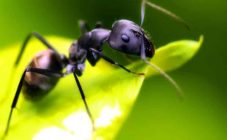The appearance of ants in the country is accompanied by troubles: an increase in the aphid population and the destruction of horticultural crops. All is fair in the fight against intruders. Often, gardeners do not resort to pesticides, but folk remedies, which are diverse, effective and popular. Among them are millet groats. A well-thought-out plan of action will quickly get rid of pests in the garden without harming crops. Many gardeners are wondering how to get rid of ants with millet.
Features of use
Millet from ants in a summer cottage is the best option for gardeners who do not want to use pesticides. The method of using cereals is simple. In addition, the cost of the product is affordable, it is much cheaper compared to special means against pests. The safety of cereals in relation to green spaces and people, the land is another argument in favor of millet.
Millet is a peeled fruit of cultivated varieties of millet.
To remove ants from the infield, it is required to eliminate the uterus. Failure to perform this operation is fraught with the deposition of new egg-laying and the appearance of worker ants.
They practice the use of millet against ants in the country, as well as semolina. To do this, sprinkle the beds with semolina and millet groats. The following areas are especially flavored:
- ant paths;
- berry bushes;
- fruit trees;
- roses.
They put special emphasis on the nests of ants by sprinkling them diligently.
The principle of millet action
The real reason why ants are afraid of millet is not fully understood. However, this method of fighting harmful insects is popular among summer residents. There are several tricks available, how to effectively fight ants in the garden with millet. In addition, the cereal is in demand in order to expel unwanted guests from the house or apartment. To achieve a result in resisting parasites, it is useful to know how millet acts on ants.
The principle of the effect of millet on insects is not fully understood. The lack of a specific pronounced aroma does not clarify why ants do not like millet. Reasoning on this issue varies significantly.
The following versions exist:
- Pests mistake millet or semolina for ant eggs and deliver them to the nest. There, the grains swell under the influence of moisture and clog the passages. The result is the death of the uterus from hunger;
- Getting to the lower tier of the anthill, fungi from the soil take root on millet grains under the influence of moisture. Such grains do not attract insects, serve as an irritant, and force them to leave the nests. Probably, fungi are a danger to them, or they do not like the smell;
- A well-known hypothesis is that insects eat millet, after a certain time the product swells in the stomachs, causing death. Similar processes occur with the uterus, if cereal for lunch - a detrimental effect on digestion is provided. This theory applies to decoys as well.
Millet groats lure birds into the garden that peck cereals together with parasites. Insects have a protective color. The catchy coloring of the grain is clearly visible to the birds, it indicates where the ants are.
The veracity of the views has not yet been verified. Scientists have not done research or studied the effects of millet on ants. But to find out whether millet actually helps to get rid of ants is quite real. Gardeners claim that the sprinkled groats disappear from the anthill and force the pests to leave the habitat. There are cases where parasites disappeared for several days and then returned again.
This is an environmentally friendly method. There are only useful substances in cereal kernels. It is surprising that millet groats are a source of inconvenience for insects.
Folk recipes with millet
Sometimes ants do not pay attention to the rump. For attractiveness, sugar is mixed into semolina or millet groats. – insects - sweet tooth:
- Powdered sugar (1 glass) per 1 kg of product, mix thoroughly;
- Soaking the millet in boiling water for a few minutes, do not overdo it in hot water, so that the millet will increase in volume in the ant's stomach. Jam and molasses, honey and jam, syrup are used as an additive. The mash is placed near the nest. Mixing sweet ingredients with dry semolina is possible.
It is appropriate to use a combination of cereals: dry semolina is poured onto the beds, sweet millet is laid out near the anthill. The best time to fight parasites is in early spring, when they wake up before they have harmed the site. To protect millet from birds, a little needles, foliage, earth are poured over the cereal.
Use a different recipe for the sweet ant bait. A sweet trap will require 500 g of millet, as well as:
- Powdered sugar (100 g). The components are mixed and poured into the nest;
- Liquid honey (1 tablespoon). The ingredients are mixed. The sweet mass is attractive to ants;
- Fermented jam (a couple of spoons), sugar syrup. Millet is soaked in advance for 15 minutes using warm liquid, then combined with a sweet base.
The use of millet groats by pests as food, seasoning with sweets will be to your taste. Strengthening the effectiveness of millet from ants is achieved by mixing boric acid or boron (5 g) to the bait. The powder kills pests, but not instantly. The parasites will have time to transfer the poison to the anthill and feed the larvae and uterus.
This is the trump card of the toxic trap: the destruction of the uterus leads to getting rid of parasites. The elimination of worker ants will not bring the desired effect - they will soon be replaced by new individuals.
A variation with swollen millet groats and a poisonous substance based on boric acid is suitable for fighting with domestic or pharaoh ants. Pests gladly absorb sweet soaked grains and die after a while by the entire colony. Poison is poured into the cracks behind the baseboards and in the floor, along the perimeter of the room and in places where pests are concentrated.
Effectiveness of millet impact
Semolina and millet are non-toxic foods that are used against insects. Whether cereals are able to come to the rescue and cope with harmful insects under certain circumstances, it is possible to find out only after application. Responses about this popular method vary.
Some gardeners who have used millet in opposing ants in an open area and in a greenhouse emphasize that this is not a panacea for completely getting rid of harmful insects, but only reducing the number to a safe minimum. They do not aim to eliminate them completely. This is not required to do - insects in small quantities not only do not harm, but benefit the country house and garden.
Some gardeners claim that there is no result or a minimal effect when using millet: ants leave from one place to another, free of millet. Requires multiple manipulations for the durability of the procedure:
- ovipositions are not destroyed;
- replenished with individuals living in neighboring dachas.
Ants are part of the ecological system and maintain its balance, they loosen the soil and cleanse the garden of rotting plant waste, eat dead insects. A small presence of ants in the beds will not harm. On the contrary, the huge colonies of pests that fill the site threaten fruit trees and other plants.
Gardeners advise millet against ants for prevention. To protect the plantings, use the product from the beginning of the spring season. It is advisable to sprinkle paths, soil between rows and between ridges, tree trunks. Garden and garden plantings remain under control, which insects like:
- grapes and strawberries;
- lettuce and currants;
- cucumbers and crops with sweet juicy berries and fruits.
